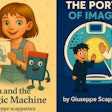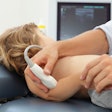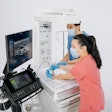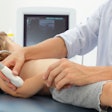Dear Pediatric Imaging Insider,
This newsletter frequently highlights articles describing the continuing need for reducing radiation dose exposure to children. While technical issues such as adjusting scanning parameters are key parts of the equation, educating colleagues is equally important.
Maintaining diligence and campaigning on behalf of pediatric patients is the subject of this issue's Insider Exclusive, which you, as an Insider subscriber, are receiving several days before our other AuntMinnie.com members. Contributing writer James Brice reports on a study that tracked the high cumulative levels of radiation dose received by children with inflammatory bowel disease. His interview with the study's principal investigator reveals that radiation exposure, unfortunately, is not always top of mind when physicians order exams.
Our coverage of a New York Times article exposing overradiation of infants and a lack of uniform minimum certification requirements for U.S. radiologic technologists launched a firestorm of discussion on the AuntMinnie.com Technologist Forum. Click here to join the thousands who've followed the nearly 400 posts.
A report from Cincinnati Children's Hospital citing a surge in the number of CT exams ordered for children admitted to emergency departments is generating a lot of media attention this week. Additional data were published online today in Radiology, but associate editor Kate Madden Yee reported details firsthand more than four months ago as part of AuntMinnie.com's annual RSNA meeting coverage.
Her article attracted a lot of attention, as is a study from the Netherlands that found that pediatric gonad shielding during x-ray exams is more trouble than it's worth. Do you concur? Read the European Congress of Radiology (ECR) coverage by international editor Eric Barnes here, and let us know what you think.
Also from the ECR meeting is a German study on the use of high-pitch chest CT to capture images of infants in motion. Click here to read this intriguing article.
Finally, we'd like to point out that MRI scans have been able to identify differences in the brains of teenage boys who exhibit aggressive antisocial behavior. Research has just begun, but catch up with it here in your Pediatric Imaging Digital Community.



















